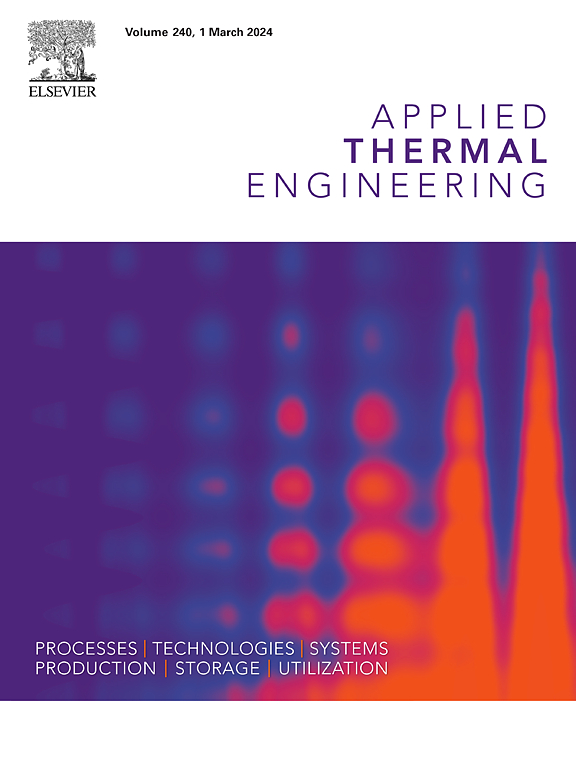氢燃料燃气轮机喷嘴导叶表面温度曲线的区间不确定性分析
IF 6.1
2区 工程技术
Q2 ENERGY & FUELS
引用次数: 0
摘要
本文章由计算机程序翻译,如有差异,请以英文原文为准。
Interval uncertainty analysis for the nozzle guide vane surface temperature profile in hydrogen-fueled gas turbine
Hydrogen has the advantages of zero-carbon emission, high heating value per mass, and wide distribution. Hydrogen-fueled gas turbines represent a highly promising way to take advantage of hydrogen energy. The ubiquitous uncertainties can cause significant variations in the performance of turbomachinery. In this paper, the uncertainty quantification of a turbine nozzle guide vane in a hydrogen-fueled gas turbine is conducted to investigate the effects of uncertainties on the vane surface temperature profile. The peak temperature on the vane surface and its location have been specified by the analytic cooling model. Due to the difficulty of obtaining the probability density function for uncertain parameters, the Chebyshev interval method and the Legendre interval method are used. The coolant flow rate and turbine inlet temperature radial profile are two uncertain-but-bounded parameters. A new sensitivity index is defined to conduct global sensitivity analysis and the satisfaction degree of interval is employed to measure the reliability of the guide vane. It has been observed that the uncertainty in the inlet temperature profile leads to a higher satisfaction degree, thus having a more negative impact on the reliability of the vane. Sensitivity analysis points out that the significance of coolant flow rate and inlet temperature profile in terms of the uncertainty in the vane peak temperature is essentially the same, contributing to about 50%. The research reveals that the Chebyshev method has smaller errors.
求助全文
通过发布文献求助,成功后即可免费获取论文全文。
去求助
来源期刊

Applied Thermal Engineering
工程技术-工程:机械
CiteScore
11.30
自引率
15.60%
发文量
1474
审稿时长
57 days
期刊介绍:
Applied Thermal Engineering disseminates novel research related to the design, development and demonstration of components, devices, equipment, technologies and systems involving thermal processes for the production, storage, utilization and conservation of energy, with a focus on engineering application.
The journal publishes high-quality and high-impact Original Research Articles, Review Articles, Short Communications and Letters to the Editor on cutting-edge innovations in research, and recent advances or issues of interest to the thermal engineering community.
 求助内容:
求助内容: 应助结果提醒方式:
应助结果提醒方式:


